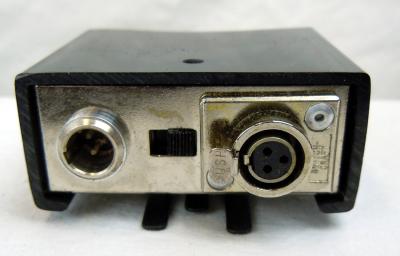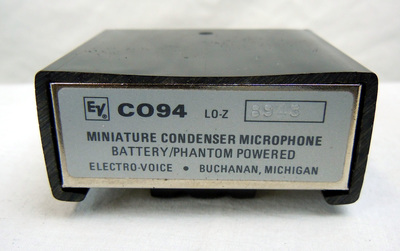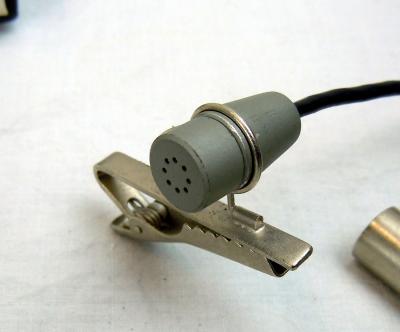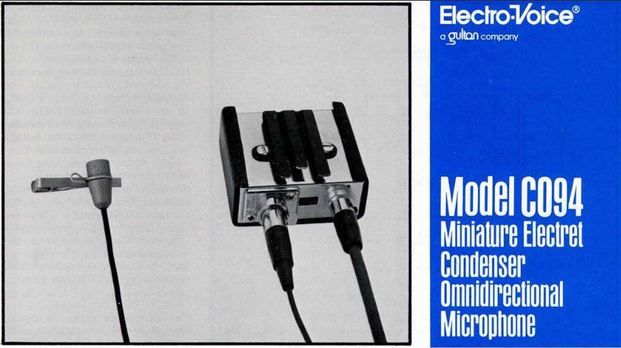The electro-Voice co94 Every great once in a while, I am going to provide for you different examples of sleeper microphones that you may find in an old closet or drawer somewhere, or even for sale cheap on ebay, reverb (yea right - nothing is cheap on reverb), guitar center used, etc. For this edition of Old Skool Sleeper Mics, we turn our attention to the Electro-Voice CO94. Originally it was meant for being a lapel microphone, but what some people don't know, is that this microphone makes a killer little snare/hi-hat mic. This little guy can withstand up to 140db without distortion, so it can more than handle most snare duties. Also - it can be powered via a 9-volt, or phantom power. The only challenge can be how to mount it on a stand to get to the appropriate place. One way this can be done, is to carefully tape the brass housing of the mic to a boom arm of a microphone stand; with the mic clip taken off the end of it. Or, you can use the included clip (if it is still on the mic) to just clip it on a stand. **Cool Tip: Being that it is an omni condenser, you can also attach the CO94 to a flat surface, and turn it into a boundary microphone for room use as well. You can do this with any omni condenser microphone by the way... You can also mount the microphone pointing upside down on the drummer's shirt. The frequency spectrum shows a bump in the 7khz range, which is perfect for bringing out the sizzle in dark snares.
0 Comments
Your comment will be posted after it is approved.
Leave a Reply. |
Do you like vintage recording gear and articles? You should visit our sister site: The Vintage Audio Portal!
**Advertise With Us! We have thousands of visitors a day. Contact us here to learn more.
Archives
August 2021
Categories |
||||||||




